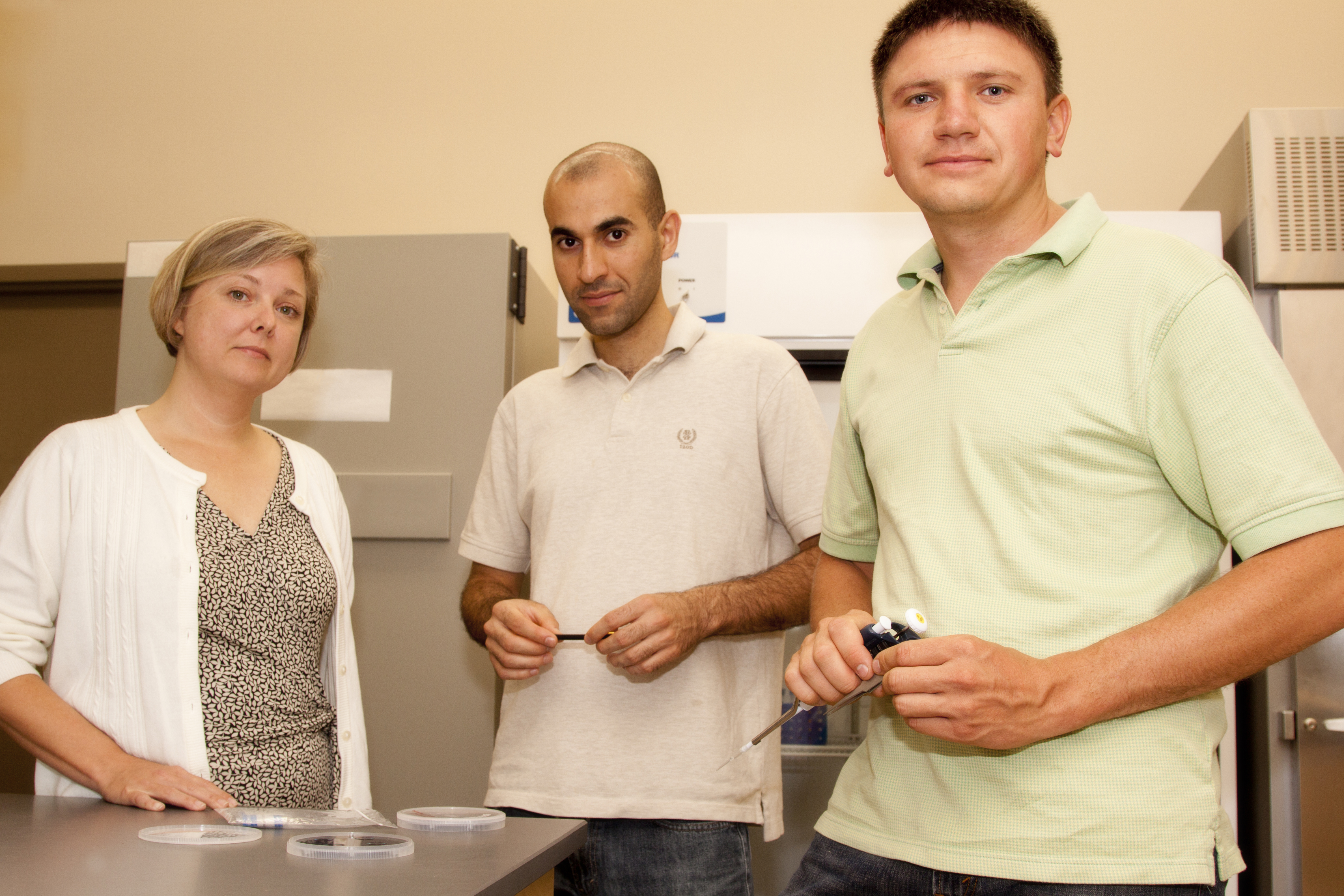Laboratory and Graduate Group Affiliations

left to right: Cristina Davis, Hamzeh Bardaweel, Konstantin Zamuruyev.
Our research group is affiliated with several world-class research institutions and programs. Please browse the links below to explore some of our research connections.
Department of Mechanical and Aerospace Engineering
Mechanical and Aeronautical Engineering at UC Davis is a large and thriving department, that currently comprises 34 full-time faculty, 12 core administrative/technical staff, 750 undergraduate students, 150 graduate students, and numerous post-doctoral fellows, research engineers, and visiting scholars hosted by our research programs. Interdisciplinary design defines the UC Davis Mechanical and Aerospace Engineering Graduate Program. Department research advances design in diverse fields such as manufacturing, micro- and nano-technology, vehicles, biomechanics, aerostructures, sensors, controls, mechatronics, combustion and energy systems. Graduate student researchers acquire skills to address both fundamental issues in these areas and to design complex, multi-component systems. This highly collaborative environment fosters multidisciplinary research while drawing on the study of mechanical engineering, mathematics, electrical engineering, materials science, biology and nanotechnology.
Department of Biomedical Engineering
The mission of the Biomedical Engineering Graduate Group is to provide the highest standard of student education, research, and service in the area of biomedical engineering. The multidisciplinary character of biomedical engineering and operation of the program as a graduate group offer unique opportunities to fulfill this mission. The educational mission is served by capitalizing on the expertise of faculty from diverse disciplines to develop a curriculum focusing on the application of engineering principles to medicine and biology. The research mission of the program is to encourage and support collaborative research designed to produce new knowledge about fundamental mechanisms in the life sciences and to bond basic and clinical research to provide new knowledge for improving health care by way of device development and innovative medical technology.
Department of Computer Science
The Department of Computer Science contributes to the mission of the University in three ways. First, its undergraduate and graduate education programs seek to educate students in the fundamental principles of computer science and the skills needed to solve the complex technological problems of modern society; the breadth of course work provides a framework for life-long learning and appreciation for multidisciplinary activities. Second, through its research programs, the department contributes to the development and progress of computer science, and software and information technology, to provide innovative, creative solutions for societal needs. Finally, the department disseminates its research—to enhance collaborations with the public sector, to further interdisciplinary interests that benefit society and to educate the public—through publications, public service and professional activities.
Department of Electrical and Computer Engineering
As a technological and educational hub in Northern California, the Department of Electrical and Computer Engineering's mission is to: 1) Educate generations of engineers and industry leaders by providing a transformative learning experience and the knowledge necessary to solve significant problems in high-tech industry and society; and 2) Develop technical innovations in ECE and multi-disciplinary areas through high-impact scholarship and research. Our faculty and researchers have pioneered new engineering approaches and disciplines, examples of which include nanoscale devices and sensors, MEMS/NEMS, energy scavenging circuits, reconfigurable terabyte computers, integrated analog and digital electronics, implantable biosensors, embedded systems, terahertz science and technology, ultra-fast intra-chip communication, high frequency and high power RF technology, big data, cyber-physical systems, wireless sensor networks and networking protocols that control the energy demand of smart appliances.
Agricultural and Environmental Chemistry
The Agricultural and Environmental Chemistry graduate group is the oldest interdepartmental graduate group at UC Davis and is renowned for its multidisciplinary approach to research in applied chemistry. In addition to the many research opportunities available, students in the group can also take advantage of an enormous breadth of classes in basic and applied chemistry and in related areas.
UC Davis Clinical and Translational Science Center (CTSC)
The UC Davis Clinical and Translational Science Center, through the programs shown in the center of the diagram, will transform silos of research into new collaborative scientific discoveries. Spearheaded in the UC Davis School of Medicine, the clinical and translational science center is a broad initiative that draws on the sciences across the broader UC Davis campus, institutional partners, as well as the community.
Center for Nano and Micro Manufacturing (CNM2)
Opened in 2004, our campus cleanroom operates a 10,000+ square foot class 100 cleanroom laboratory. The laboratory is available for use by UCD faculty, students and staff on a recharge basis. Students, research staff and research faculty may use any tool in the facility after they have passed a training/certification module. Local industry may also be interested in using the facility by becoming an Industrial Affiliate.